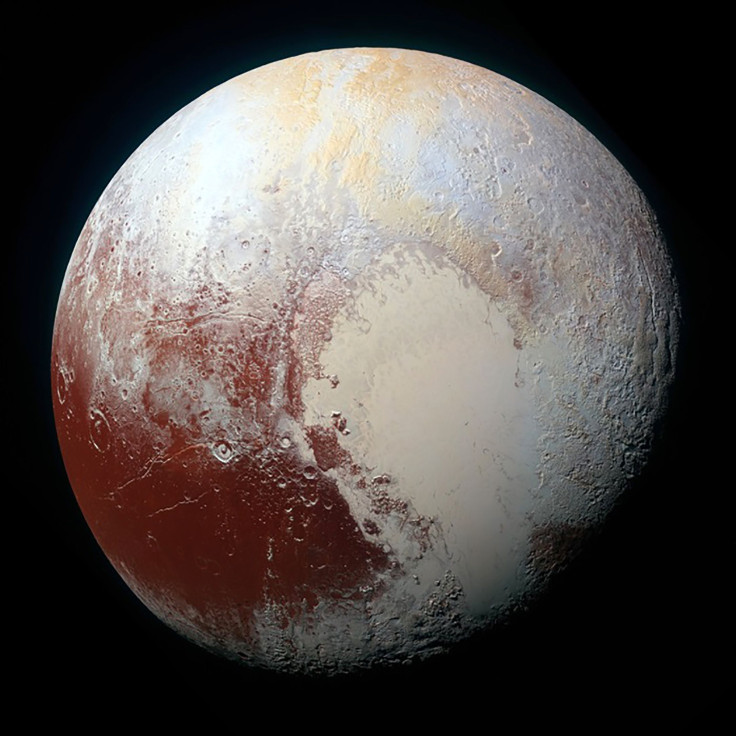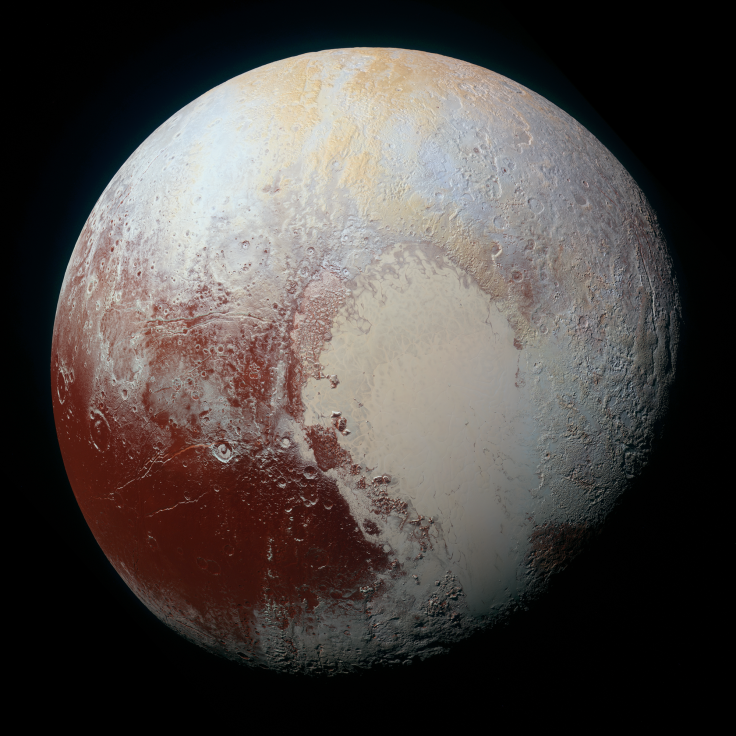Pluto’s Cold Heart May Be Filled With Slushy, Icy Water

Pluto’s huge “heart” is perhaps the most distinctive feature glimpsed by the New Horizons spacecraft during its flyby last year. Despite being surrounded by a mottled terrain, this 1,000-mile region, known as Tombaugh Regio, is featureless, which could, as NASA previously remarked, be a sign of “ongoing geological processes.”
Now, further analysis of New Horizons data has thrown up a surprising finding about Sputnik Planitia — the wide plane in the western lobe of the heart. The region, according to a study published Wednesday in the journal Nature, may be harboring a cold, slushy ocean of water-ice.
According to the authors of the study, the presence of such an ocean would solve a longstanding puzzle — why does Tombaugh Regio align almost exactly opposite Pluto’s moon Charon?
“The New Horizons data say it’s not only opposite Charon, but it’s really close to being almost exactly opposite,” study co-author Richard Binzel from the Massachusetts Institute of Technology, said in a statement. “So we asked, what’s the chance of that randomly happening? And it’s less than 5 percent that it would be so perfectly opposite. And then the question becomes, what was it that caused this alignment?”
The answer, the study’s authors contend, is a viscous ocean of water — one whose liquid state is maintained due to the planet’s interior heat flow. According to the researchers, Sputnik Planitia most likely formed somewhere else on Pluto before gaining enough mass over the course of the dwarf planet’s evolutionary history as nitrogen-ice accumulated in it. This mass, coupled with the mass of the subsurface ocean, eventually tilted the planet to its current orientation.
“A few researchers have thought Pluto could retain enough heat to still be warm, but it’s been a minority opinion — most people thought Pluto must be cold by now! So an ocean is a very welcome and extremely interesting result,” Lindy Elkins-Tanton, director of the School of Earth and Space Exploration at Arizona State University, who was not involved in the study, said in the statement. “The surprises of Pluto raise the possibility that other Kuiper Belt objects may also still be warm. These results immediately put large Kuiper belt objects on the list of places that could harbor life. What a great surprise!”

However, in a separate study — also published Wednesday in Nature — researchers argued that a subsurface ocean is not needed to explain Pluto’s tilt. According to them, the weight of the nitrogen-ice that accumulated in the region over the years would have been enough to reorient the dwarf planet vis-à-vis Charon.
“Each time Pluto goes around the sun, a bit of nitrogen accumulates in the heart,” study co-author James Keane from the University of Arizona, said in a statement. “Once enough ice has piled up, maybe a hundred meters thick, it starts to overwhelm the planet's shape, which dictates the planet's orientation.”
If the dwarf planet does have a subsurface ocean, it would join the growing list of objects in our solar system that are believed to have water. So far, there is evidence that three of Saturn’s moons, three of Jupiter’s moons, Neptune’s moon Triton, and probably the asteroid belt dwarf planet Ceres, have water. The finding, if confirmed, would also increase the likelihood that other objects in the Kuiper belt, which New Horizons is now headed toward, may have water.
© Copyright IBTimes 2024. All rights reserved.






















